History
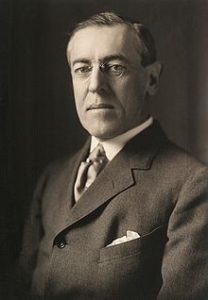 The United States has tried to stay out of most of the wars the rest of the world has become involved in, but sometimes circumstances have drawn us into wars we didn’t want to enter. World War I is a prime example of just such a situation. On February 26, 1917, President Woodrow Wilson learns of the so-called Zimmermann Telegram. The telegram was a message from German Foreign Secretary Arthur Zimmermann to the German ambassador to Mexico proposing a Mexican-German alliance in the event of a war between the United States and Germany. This telegram was a crucial step toward the entry of the United States into World War I.
The United States has tried to stay out of most of the wars the rest of the world has become involved in, but sometimes circumstances have drawn us into wars we didn’t want to enter. World War I is a prime example of just such a situation. On February 26, 1917, President Woodrow Wilson learns of the so-called Zimmermann Telegram. The telegram was a message from German Foreign Secretary Arthur Zimmermann to the German ambassador to Mexico proposing a Mexican-German alliance in the event of a war between the United States and Germany. This telegram was a crucial step toward the entry of the United States into World War I.
On February 24, 1917, British authorities gave Walter Hines Page, the United States ambassador to Britain, a copy of the Zimmermann Telegram. It was a coded message from Zimmermann to Count Johann von Bernstorff, the German ambassador to Mexico. 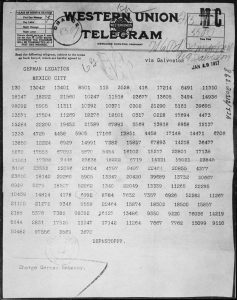 In the telegram, which was intercepted and deciphered by British intelligence in late January, Zimmermann instructed his ambassador, that in the event of a German war with the United States, to offer significant financial aid to Mexico, provided Mexico agreed to enter the conflict as a German ally. Germany also promised to restore to Mexico the lost territories of Texas, New Mexico and Arizona. Now, when you think about it, that is some big promises for Germany to be making, but I supposed that if the event of a loss in the war, all promises were null and void.
In the telegram, which was intercepted and deciphered by British intelligence in late January, Zimmermann instructed his ambassador, that in the event of a German war with the United States, to offer significant financial aid to Mexico, provided Mexico agreed to enter the conflict as a German ally. Germany also promised to restore to Mexico the lost territories of Texas, New Mexico and Arizona. Now, when you think about it, that is some big promises for Germany to be making, but I supposed that if the event of a loss in the war, all promises were null and void.
Upon learning about the proposed agreement between Germany and Mexico, the State Department was quick to send a copy of the Zimmermann Telegram to 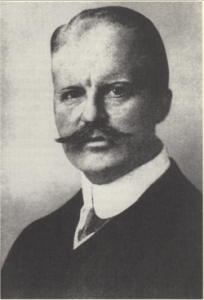 President Wilson. The president was shocked by the note’s content and the next day proposed to Congress that the United States should start arming its ships against possible German attacks. Wilson also authorized the State Department to publish the telegram. It appeared on the front pages of American newspapers on March 1, and it left many Americans horrified. The telegram was quickly declared a forgery by the public, but two days later, Zimmermann himself announced that it was genuine.
President Wilson. The president was shocked by the note’s content and the next day proposed to Congress that the United States should start arming its ships against possible German attacks. Wilson also authorized the State Department to publish the telegram. It appeared on the front pages of American newspapers on March 1, and it left many Americans horrified. The telegram was quickly declared a forgery by the public, but two days later, Zimmermann himself announced that it was genuine.
The Zimmermann Telegram helped turn the American public, already angered by repeated German attacks on United States ships, firmly against Germany. On April 2, President Wilson, who had initially sought a peaceful resolution to World War I, urged immediate United States entrance into the war. Four days later, Congress declared war against Germany, and the United States entered World War I on April 6, 1917.
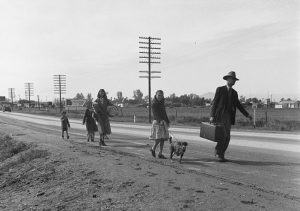
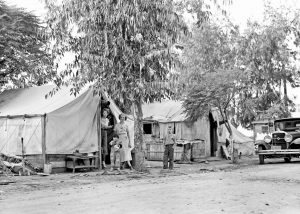 The “Dust Bowl” was an environmental disaster that hit the Midwest in the 1930s. A combination of a severe water shortage and harsh farming techniques caused the disaster. Some scientists believe it was the worst drought in North America in 300 years. The lack of rain killed the crops that kept the soil in place. When winds blew, they raised enormous clouds of dust. It deposited mounds of dirt on everything, even covering houses. With the Dust Bow came the failure of many farms in the Midwest, and the people had no choice but to move, in order to find a way to make a living.
The “Dust Bowl” was an environmental disaster that hit the Midwest in the 1930s. A combination of a severe water shortage and harsh farming techniques caused the disaster. Some scientists believe it was the worst drought in North America in 300 years. The lack of rain killed the crops that kept the soil in place. When winds blew, they raised enormous clouds of dust. It deposited mounds of dirt on everything, even covering houses. With the Dust Bow came the failure of many farms in the Midwest, and the people had no choice but to move, in order to find a way to make a living.
I suppose that the invasion that followed might have been similar to the current refugees. It wasn’t just one family that moved, but hundreds of families. Los Angeles Police Chief James E. Davis, seeking to halt the “invasion” of dust-bowl Depression refugees in February, 1936, declared a “Bum Blockade” to stop the mass emigration of poverty stricken families fleeing from the dust-torn states of the Midwest. These days, he would have met with severe criticism, not so much for the blockade, as for the name of the blockade.
By 1934, 75% of the United States was severely affected by this terrible drought. The region most affected was the Great Plains, and included more than 100 million acres, centered in Oklahoma, the Texas Panhandle, Kansas, and parts of Colorado and New Mexico. These millions of acres of farmland became useless and soon, hundreds of thousands of people were forced to leave their homes. Many of these destitute families packed up their belongings and migrated west, hoping to find work and a better life, about 200,000 of which were California bound. Instead of finding the promised land of their dreams, however, they found that the available labor pool was vastly disproportionate to the number of job openings that could be filled. Migrants who found employment soon learned that this surplus of workers caused a significant reduction in the going wage rate, and even when the entire family worked, they were unable to support themselves.
Many set up “ditchbank” camps along irrigation canals in the farmers’ fields, which brought with them poor sanitary conditions and created a public health problem. And, of those who could find work in agriculture, it did not put an end to their travels. Instead, their lives were characterized by transience, if they wanted to maintain a steady income, which required them to follow the various harvests around the state. In the meantime, California was overwhelmed, trying to figure out how to absorb as many as 6,000 migrants crossing its borders daily. Also feeling the effects of the Depression, California infrastructures were already overburdened, and the steady stream of newly arriving migrants was more than the system could bear. Though these refugees came from a number of states, Californians often lumped them together as “Okies” or “Arkies,” who became the butt of derogatory jokes and the focus of political campaigns in which candidates made them the scapegoat for a shattered economy. They were accused of many crimes, as well as shiftlessness, lack of ambition, school overcrowding and stealing jobs from native Californians.
California’s Indigent Act was passed in 1933, which made it a crime to bring indigent persons into the state, Davis contended that his men needed no special approval because “any officer has the authority to enforce the state law.” Asking border-county sheriffs to deputize his officers, most complied. However, some refused, including Modoc County, who forced 14 LAPD officers to leave after they turned away local residents trying to 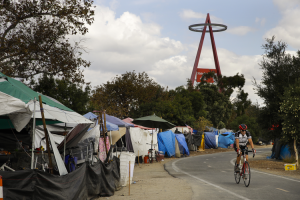
 return home. On August 24, 1935, the Los Angeles Herald-Express ran an article warning emigrants to stay away from California. It read: Stay Away From California: Warning To Transient Hordes. Those days were very different from the California of today, and not in a good way. I don’t agree with derogatory name calling, but common sense tells us that sometimes you have to try to stop a flood, even if it’s a flood of people.
return home. On August 24, 1935, the Los Angeles Herald-Express ran an article warning emigrants to stay away from California. It read: Stay Away From California: Warning To Transient Hordes. Those days were very different from the California of today, and not in a good way. I don’t agree with derogatory name calling, but common sense tells us that sometimes you have to try to stop a flood, even if it’s a flood of people.
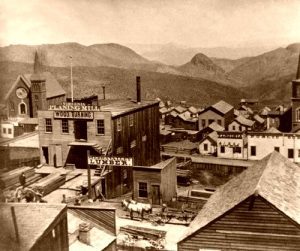 Gold brought miners from the east to multiple areas of the American west…all looking to make their fortune in the gold fields. Unfortunately, it wasn’t just gold and silver miners who flooded Nevada, or any other gold rush area, in the late 1800s in search of their fortunes. The West was indeed wild, and it and the gold also attracted plenty of outlaws and bandits, looking to make their fortune too, but not willing to do the work to mine the gold. Nevada, like other states of the Wild West, attracted its share of outlaws and bandits. One such man, named Andrew Jackson “Jack” Davis, led a gang of thieves involved in robbing stage stops, bullion wagons, and trains in Western Nevada.
Gold brought miners from the east to multiple areas of the American west…all looking to make their fortune in the gold fields. Unfortunately, it wasn’t just gold and silver miners who flooded Nevada, or any other gold rush area, in the late 1800s in search of their fortunes. The West was indeed wild, and it and the gold also attracted plenty of outlaws and bandits, looking to make their fortune too, but not willing to do the work to mine the gold. Nevada, like other states of the Wild West, attracted its share of outlaws and bandits. One such man, named Andrew Jackson “Jack” Davis, led a gang of thieves involved in robbing stage stops, bullion wagons, and trains in Western Nevada.
Davis first arrived in the area in 1859. His plan was to lead two different lives, 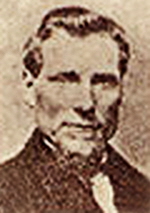 and he carried it out quite well. To the outside world he looked like a legitimate business man when he set up a livery stable in Gold Hill. However, in his “spare” time, Davis and his gang took to the bandit road, taking gold and bullion from any source they could find. Davis built a small bullion mill in Six Mile Canyon east of Virginia City, Nevada. There, he melted down his stolen gold, selling it as legitimate gold bars. He then buried his proceeds so people would not notice or catch on to how wealthy he really was, because after all, how rich could a livery stable owner be.
and he carried it out quite well. To the outside world he looked like a legitimate business man when he set up a livery stable in Gold Hill. However, in his “spare” time, Davis and his gang took to the bandit road, taking gold and bullion from any source they could find. Davis built a small bullion mill in Six Mile Canyon east of Virginia City, Nevada. There, he melted down his stolen gold, selling it as legitimate gold bars. He then buried his proceeds so people would not notice or catch on to how wealthy he really was, because after all, how rich could a livery stable owner be.
On November 4, 1870 the gang robbed the express car of the Central Pacific Railroad near Verdi, Nevada taking some $40,000 in gold coins and bullion. Pursued by lawmen, they were said to have buried the stolen cache along the north bank of the Truckee River, between Reno and Laughton’s Hot Springs west of town, near the site of the long-abandoned River Inn. The entire gang was apprehended and all were sent to the Nevada State Prison, but would not tell where they had hidden their stolen loot. In 1875, Davis was paroled but two  years later, he was shot in the back during a Wells Fargo stagecoach robbery near Warm Springs, Nevada. If Davis ever returned for his cache is unknown, but many believe it is still hidden in Six-Mile Canyon or in the vicinity of the Truckee River. Treasure hunters have long searched these two locations without success. If the money is still there, it may never be found.
years later, he was shot in the back during a Wells Fargo stagecoach robbery near Warm Springs, Nevada. If Davis ever returned for his cache is unknown, but many believe it is still hidden in Six-Mile Canyon or in the vicinity of the Truckee River. Treasure hunters have long searched these two locations without success. If the money is still there, it may never be found.
Another legend abounds that the ghost of Jack Davis protects his treasure in the canyon. Many who have looked for the treasure have been frightened away by the white screaming phantom that is said to sometimes sprout wings and rise into the air. I suppose some would say I shouldn’t be so skeptical, but since I don’t believe in ghosts, my guess is that people just get freaked out, and their imagination runs away with them. Nevertheless, those who think they have seen what they believe to be a ghost, would not be persuaded by my disbelief in same.
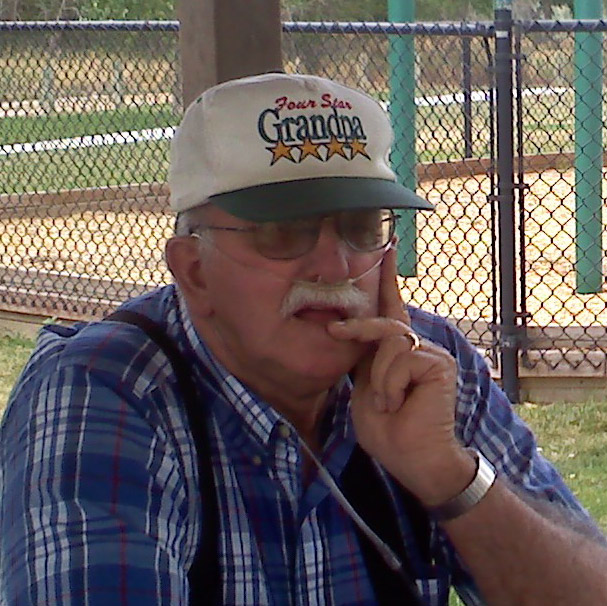 My uncle, Jack McDaniels was such a sweet man. He cared about everyone he knew. He was a friend to all, and all of the kids in the family loved him. He was first and foremost, a family man, and took care of anyone who needed it. For many years, his mother lived just a few steps away in a little trailer house, basically in the front yard of the family home. It kept her close to the family, and he could take care of her.
My uncle, Jack McDaniels was such a sweet man. He cared about everyone he knew. He was a friend to all, and all of the kids in the family loved him. He was first and foremost, a family man, and took care of anyone who needed it. For many years, his mother lived just a few steps away in a little trailer house, basically in the front yard of the family home. It kept her close to the family, and he could take care of her.
Like a lot of men, Uncle Jack loved tinkering with cars. In his younger days, he drive a stick car, and once that is in your blood, it follows that car races are something that never really gets out of your system. Uncle Jack was no different. I’m sure there were many days when the television at the family home was locked into one car race or another. I don’t know how my Aunt Bonnie, his wife, felt about car races, but it could have very easily been a matter of like it or go find something else to do. I rather think that she ended up liking it, because they loved spending time together. You rarely saw one without the other, 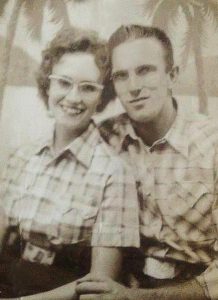 at least on his days off.
at least on his days off.
Uncle Jack was a walking Casper Historian, which is something I wish I had known years ago. The stories he could have shared with me would have enriched my blog greatly, I’m sure. He wasn’t a pushy person though, and so unless you asked, he probably didn’t feel like he could intrude. If only I had known to ask.
Along with history and car racing, Uncle Jack loved hunting, fishing, and camping, making him a true Wyoming outdoorsman…not surprising since he was born and raised right here in Casper, Wyoming. He grew up with all the great things there are to do here, and he wanted to show his family all the wonderful things he had been able to do as a kid. He wanted them to have the same kind of amazing life he did. Today would have been Uncle Jack’s 80th birthday. Happy birthday in Heaven Uncle Jack. You were a great man. We love and miss you very much.
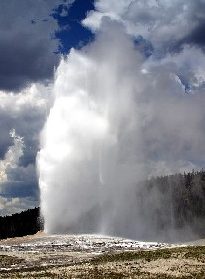 It’s amazing how much we can fear the things we don’t understand. As an example, the Indians who lived around the geysers of Yellowstone. The early Indians thought that the hissing and thundering were the voices of evil spirits. Even though the geysers were frightening, the Indians regarded the mountains at the head of the river as the crest of the world, and the man who gained their summits could see the happy hunting-grounds below, brightened with the homes of the blessed. They loved this land in which their fathers had hunted, and when they were driven back from the settlements the Crows took refuge in what is now Yellowstone Park, but they were still not safe.
It’s amazing how much we can fear the things we don’t understand. As an example, the Indians who lived around the geysers of Yellowstone. The early Indians thought that the hissing and thundering were the voices of evil spirits. Even though the geysers were frightening, the Indians regarded the mountains at the head of the river as the crest of the world, and the man who gained their summits could see the happy hunting-grounds below, brightened with the homes of the blessed. They loved this land in which their fathers had hunted, and when they were driven back from the settlements the Crows took refuge in what is now Yellowstone Park, but they were still not safe.
The soldiers pursued them, intent on avenging acts that the red men had committed while they were being so wrongly mistreated. A small group of the original fugitive band gathered at the head of that mighty rift in the earth known as the Grand Canyon of the Yellowstone…a group that had succeeded in escaping the bullets of the soldiers, and with great courage they resolved to die rather than be taken and carried away to be held in a distant prison. They built a raft and laced it on the river at the foot of the upper fall, and for a few days they 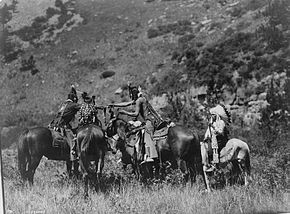 enjoyed the plenty and peace that were their privilege in former times. A short-lived peace, however, for one morning they are awakened by the rifle fire, and they knew that the troops are upon them.
enjoyed the plenty and peace that were their privilege in former times. A short-lived peace, however, for one morning they are awakened by the rifle fire, and they knew that the troops are upon them.
Boarding their raft they thrust it toward the middle of the stream, perhaps with the idea of making it to the opposite shore. If that was their intent, the rapid current kept them from attaining their goal. A few among them had guns, but their bullets had only a slight effect at the troops, who stood watching in amazement from the shore. The soldiers didn’t fire, but watched, with something like dread, the descent of the raft as it passes into the current. Then, with many a turn and pitch, it whirled on faster and faster. The death-song rises triumphant above the lash of the waves and that distant but awful booming that is to be heard in the 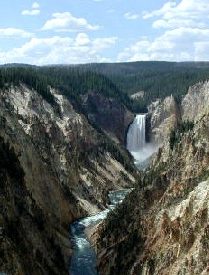 canyon. Every red man has his face turned toward the foe with a look of defiance, and the tones of the death-chant have in them something of mockery and hate. The Indians went defiantly to their deaths, refusing to show the slightest amount of fear.
canyon. Every red man has his face turned toward the foe with a look of defiance, and the tones of the death-chant have in them something of mockery and hate. The Indians went defiantly to their deaths, refusing to show the slightest amount of fear.
The raft was now between the jaws of the rocks. Beyond and below are vast walls, shelving toward the floor of the gulf a thousand feet below. The beauty of the falls will be their last vision…brilliant colors shining in the sun of morning that sheds as peaceful a light on wood and hill. They believe they are heading to a place where humans don’t shoot human, and where they will be free again. The raft was galloping through the foam like a racehorse, and even the hardened soldiers could not hold back the shudder as they imagined the fate of the brave Indians. Now the brink is reached. The raft tips toward the gulf, and with a cry of triumph the red men are launched over the cataract, into the bellowing chasm, and the rocky floor that waited below.
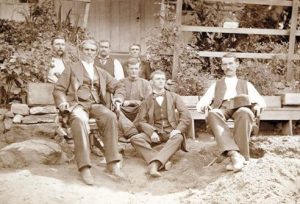 When the ranchers began to take over the western plains, there were those who were honest, and those who were scoundrels. One of those scoundrels was Albert John Bothwell (1855-1928), who was one of the main instigators of the Johnson County War in Wyoming. Bothwell was born in Iowa and migrated to Wyoming, where he quickly became one of the most prosperous cattlemen in Sweetwater County. Bothwell was an arrogant man, who tended to take what he wanted. He had been grazing his cattle on unclaimed homestead land, which was not his to use, but as I said, he tended to take what he wanted. When James Averell and his girlfriend, Ellen Watson came along in 1886, and filed a claim on the land Bothwell had been using, they found that he had gone so far as to illegally fence much of their land with barbed wire. In his mind, Bothwell
When the ranchers began to take over the western plains, there were those who were honest, and those who were scoundrels. One of those scoundrels was Albert John Bothwell (1855-1928), who was one of the main instigators of the Johnson County War in Wyoming. Bothwell was born in Iowa and migrated to Wyoming, where he quickly became one of the most prosperous cattlemen in Sweetwater County. Bothwell was an arrogant man, who tended to take what he wanted. He had been grazing his cattle on unclaimed homestead land, which was not his to use, but as I said, he tended to take what he wanted. When James Averell and his girlfriend, Ellen Watson came along in 1886, and filed a claim on the land Bothwell had been using, they found that he had gone so far as to illegally fence much of their land with barbed wire. In his mind, Bothwell 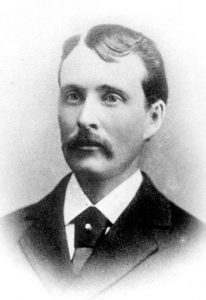 had decided that the land was somehow his, that his needs were more important, or that no one would ever put in a claim on it, at least not if he had any say in the matter.
had decided that the land was somehow his, that his needs were more important, or that no one would ever put in a claim on it, at least not if he had any say in the matter.
When Averell and Watson moved onto the land, Bothwell’s illegal use of the property came to light, and of course, led to repeated disputes between Bothwell and the young couple. Bothwell, was a powerful man, as many cattle barons are. They have men to keep what they believe to be theirs protected. The problem here was that the land wasn’t his…it belonged to Averell and Watson. When Averell wrote to the Casper Daily Mail criticizing Bothwell and claiming that the cattle barons had too much power, Bothwell retaliated by claiming that Averell and Watson were stealing his cattle. Dubbing Watson with the moniker of “Cattle Kate,” he also accused her of being a prostitute who sometimes accepted stolen cattle in payment.
As the dispute continued to rage over the next several months, Bothwell convinced other area ranchers of Averell and Watson’s guilt, and on July 20, 1889, he convinced five other men to help him hang the pair at a 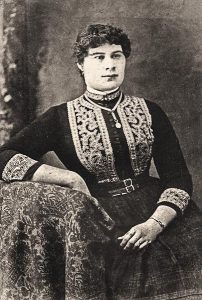 small canyon by the Sweetwater River. Though the men were charged with murder, key witnesses began to mysteriously die or disappear and all of them were acquitted. Both Averell and “Cattle Kate” were “tried” in the press, which was owned or influenced by the cattle barons, and branded as “outlaws.” Bothwell later acquired both homesteads of the murdered victims.
small canyon by the Sweetwater River. Though the men were charged with murder, key witnesses began to mysteriously die or disappear and all of them were acquitted. Both Averell and “Cattle Kate” were “tried” in the press, which was owned or influenced by the cattle barons, and branded as “outlaws.” Bothwell later acquired both homesteads of the murdered victims.
After the dust settled and many years had passed, re-investigations into the whole affair have found that most likely neither James Averell, nor his girlfriend Ellen “Cattle Kate” Watson, were guilty of any crime. In the meantime, this event, as well as several other similar events, led to the Johnson County War in Wyoming. Albert Bothwell, however, walked away free of any repercussion and continued to run his ranch until his retirement, when he moved to Los Angeles, California, where he died on March 1, 1928. No one was ever prosecuted for the murders of James Averell and Ellen Watson.
 As the world is watching the 2018 Winter Olympics, officially known as the XXIII Olympic Winter Games and commonly known as PyeongChang 2018, looking at the hope for gold in this group of young talented athletes, I have been thinking back to another group of young talented athletes…athletes that would never get the chance to realize their dreams. Yes, this group had won gold before, so they were not new to the world of competition, but their hopes of any future gold were crushed forever on February 15, 1961, when they were on their way to the 1961 World Figure Skating Championships in Prague, Czechoslovakia.
As the world is watching the 2018 Winter Olympics, officially known as the XXIII Olympic Winter Games and commonly known as PyeongChang 2018, looking at the hope for gold in this group of young talented athletes, I have been thinking back to another group of young talented athletes…athletes that would never get the chance to realize their dreams. Yes, this group had won gold before, so they were not new to the world of competition, but their hopes of any future gold were crushed forever on February 15, 1961, when they were on their way to the 1961 World Figure Skating Championships in Prague, Czechoslovakia.
On that day, the entire 18 member United States figure skating team, along with the 16 people who were accompanying them, which included family, friends, coaches and officials, as well as the crew and 38 people who were not with the figure skating team, died when the plane went down around 10am in clear weather while attempting to make a scheduled stopover landing at the Belgian National Airport in Brussels. One person on the ground, a farmer working in the field where the Boeing 707 crashed in Berg-Kampenhout, several miles from the airport, was killed by some shrapnel. Investigators were unable to 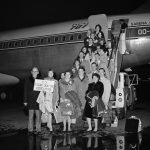 determine the cause of the crash, although mechanical difficulties were suspected.
determine the cause of the crash, although mechanical difficulties were suspected.
Killed in the crash was 16 year old Laurence Owen, who had won the U.S. Figure Skating Championship in the ladies’ division the previous month. She was featured on the February 13, 1961, cover of Sports Illustrated, which called her the “most exciting U.S. skater.” Bradley Long, the 1961 U.S. men’s champion, also perished in the crash, as did Maribel Owen (Laurence’s sister) and Dudley Richards, the 1961 U.S. pairs champions, and Diane Sherbloom and Larry Pierce, the 1961 U.S. ice dancing champions. Also killed was 49-year-old Maribel Vinson-Owen, a nine-time U.S. ladies’ champion and 1932 Olympic bronze medalist, who coached scores of skaters, including her daughters Maribel and Laurence, and Frank Carroll, who went on to coach the 2010 men’s Olympic gold medalist Evan Lysacek and nine-time U.S. champion Michelle Kwan. The crash was a tragedy that devastated the U.S. figure skating program and meant the loss of the country’s top skating talent. Prior to the crash, the U.S. had won the men’s gold medal at every Olympics since 1948…when Dick Button became the first American man to do so, while U.S. women had claimed Olympic gold in 1956 and 1960. After the crash, an American woman named Peggy Fleming would be the next to win, but she would not capture Olympic gold until 1968, while a U.S. man, Scott Hamilton would not do so until 1984. The incident was the 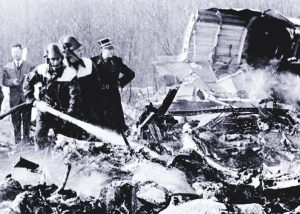 worst air disaster involving a U.S. sports team until November 1970, when 37 players on the Marshall University football team were killed in a plane crash in West Virginia.
worst air disaster involving a U.S. sports team until November 1970, when 37 players on the Marshall University football team were killed in a plane crash in West Virginia.
Shortly after the 1961 crash, the U.S. Figure Skating Memorial Fund was established. To date, it has provided financial assistance to thousands of elite American skaters. In 2011, the 50th anniversary of the tragedy, the 18 members of the 1961 figure skating team, along with the 16 people traveling with them to Prague, were inducted into the U.S. Figure Skating Hall of Fame in Colorado Springs, Colorado.
 Whether you consider Valentine’s Day to be a highly commercialized day, geared toward getting the consumer to spend a bunch of money on silliness, or you see it as a day set aside to celebrate love, everyone who has loved ones in their life, has to deal with it in some way. Perhaps deal with it is a poor choice of words, but there are those who feel like that is exactly what the day is all about…and they have loved ones too. Of course, those same people feel like Christmas, Easter, Mother’s Day, Father’s Day, and all the others are the same commercialized money trap. I don’t really get that. Why not have a day here
Whether you consider Valentine’s Day to be a highly commercialized day, geared toward getting the consumer to spend a bunch of money on silliness, or you see it as a day set aside to celebrate love, everyone who has loved ones in their life, has to deal with it in some way. Perhaps deal with it is a poor choice of words, but there are those who feel like that is exactly what the day is all about…and they have loved ones too. Of course, those same people feel like Christmas, Easter, Mother’s Day, Father’s Day, and all the others are the same commercialized money trap. I don’t really get that. Why not have a day here  and there to celebrate the people who have blessed your life? After all, where would your life be without those wonderful people in it. Sometimes, I think people take their family so much for granted, that they forget how blessed they truly are.
and there to celebrate the people who have blessed your life? After all, where would your life be without those wonderful people in it. Sometimes, I think people take their family so much for granted, that they forget how blessed they truly are.
I get that we are all busy. In fact, that is one reason why we should embrace these days. They remind us to take a moment out of our busy, hectic lives and remember the people who are always there for us…through thick and thin, and I don’t mean just our spouse. Our parents have given up many things to make a better life for their kids; our siblings basically guarantee that we always have friends; our kids, in whose  eyes, we can do no wrong…at least when they are little. We have all of these people, who show us so much love, and then we complain about having to buy them a little box of candy or flowers!! What does that say about us?
eyes, we can do no wrong…at least when they are little. We have all of these people, who show us so much love, and then we complain about having to buy them a little box of candy or flowers!! What does that say about us?
There are also marriages and families that are a little bit more unconventional, who do things like dinner, or handmade gifts, and in reality it is not the gift that counts, but the thought…the sentiment…the love. And most of all, it’s about showing how much they are loved, because after all, it’s the love that matters. And since it is the love that matters, why not show it.
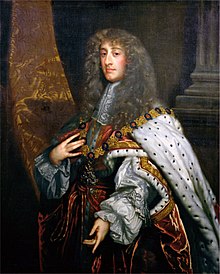 Religious beliefs have caused a number of issues in governments over the centuries, sometimes pitting family members against family members. They were, in fact, the main reason that the United States was founded…to get away from religious persecution. Such was also the case in the coup that was called Britain’s Bloodless Glorious Revolution. At the time, King James II was the king in Britain, and he was a Catholic. At first that didn’t seem like a huge problem, but King James’s policies of religious tolerance after 1685 began to meet with increasing opposition from members of leading political circles, who were troubled by the King’s Catholicism and his close ties with France. The crisis facing the King came to a head in 1688, with the birth of his son, James Francis Edward Stuart, on June 10. This changed the existing line of succession by displacing the heir presumptive, his daughter Mary, a Protestant and the wife of William of Orange, with young James Francis Edward as heir apparent, because at that time it was the first born “son” who inherited the throne. The establishment of a Roman Catholic dynasty in the kingdoms now seemed likely, and the people weren’t happy about it.
Religious beliefs have caused a number of issues in governments over the centuries, sometimes pitting family members against family members. They were, in fact, the main reason that the United States was founded…to get away from religious persecution. Such was also the case in the coup that was called Britain’s Bloodless Glorious Revolution. At the time, King James II was the king in Britain, and he was a Catholic. At first that didn’t seem like a huge problem, but King James’s policies of religious tolerance after 1685 began to meet with increasing opposition from members of leading political circles, who were troubled by the King’s Catholicism and his close ties with France. The crisis facing the King came to a head in 1688, with the birth of his son, James Francis Edward Stuart, on June 10. This changed the existing line of succession by displacing the heir presumptive, his daughter Mary, a Protestant and the wife of William of Orange, with young James Francis Edward as heir apparent, because at that time it was the first born “son” who inherited the throne. The establishment of a Roman Catholic dynasty in the kingdoms now seemed likely, and the people weren’t happy about it.
Some Tory (conservative) members of parliament worked with members of the opposition Whigs in an attempt to resolve the crisis by secretly initiating dialogue with William of Orange to come to England…outside the jurisdiction of the English Parliament. Stadtholder William, the de facto head of state of the Dutch United Provinces, feared a Catholic Anglo–French alliance and had already been planning a military intervention in England, so he was very much open to the plan. After consolidating political and financial support, William crossed the North Sea and English Channel with a large invasion fleet in November 1688, landing at Torbay in Devonshire with an army of 15,000 men, William advanced to London, meeting no opposition from James’ army, which had deserted the king. After only two minor clashes between the two opposing armies in England, and anti-Catholic riots in several towns, King James’s regime collapsed, largely because of a lack of resolve shown by the king. Following Britain’s Bloodless Glorious Revolution, Mary, the daughter of the deposed king, and William of Orange, her husband, are proclaimed joint sovereigns of Great Britain under Britain’s new Bill of Rights. At first I thought that odd, because by rights she would have been in the royal line, but I suppose you would have to honor the warrior who made it all possible.
King James was allowed to escape to France, and in February 1689 Parliament offered the crown jointly to  William and Mary, provided they accept the Bill of Rights. The Bill of Rights, which greatly limited royal power and broadened constitutional law, granted Parliament control of finances and the army and prescribed the future line of royal succession, declaring that no Roman Catholic would ever be sovereign of England. The document also stated that Englishmen possessed certain inviolable civil and political rights, a political concept that was a major influence in the composition of the United States Bill of Rights, composed almost exactly a century later. The Glorious Revolution, the ascension of William and Mary, and the acceptance of the Bill of Rights were decisive victories for Parliament in its long struggle against the crown.
William and Mary, provided they accept the Bill of Rights. The Bill of Rights, which greatly limited royal power and broadened constitutional law, granted Parliament control of finances and the army and prescribed the future line of royal succession, declaring that no Roman Catholic would ever be sovereign of England. The document also stated that Englishmen possessed certain inviolable civil and political rights, a political concept that was a major influence in the composition of the United States Bill of Rights, composed almost exactly a century later. The Glorious Revolution, the ascension of William and Mary, and the acceptance of the Bill of Rights were decisive victories for Parliament in its long struggle against the crown.
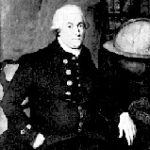
 In the years between 1791 and 1794, a man named Captain George Vancouver was exploring the Pacific Northwest area which would eventually become part of the United States of America. Captain Vancouver was the commander of the HMS Discovery and its accompanying ships sent to survey the northern Pacific Ocean. It was Vancouver and his crew who first recorded the sighting of Mount Saint Helens, and the first to explore Puget Sound. Following the coasts of Oregon and Washington and intending to explore every bay and outlet of the region, he sent men in smaller boats to explore the Columbia River and enter the strait of Juan de Fuca.
In the years between 1791 and 1794, a man named Captain George Vancouver was exploring the Pacific Northwest area which would eventually become part of the United States of America. Captain Vancouver was the commander of the HMS Discovery and its accompanying ships sent to survey the northern Pacific Ocean. It was Vancouver and his crew who first recorded the sighting of Mount Saint Helens, and the first to explore Puget Sound. Following the coasts of Oregon and Washington and intending to explore every bay and outlet of the region, he sent men in smaller boats to explore the Columbia River and enter the strait of Juan de Fuca.
Vancouver commanded a variety of ships to complete his mission, so while the smaller vessels explored the many channels and rivers along the coast, the larger ships, including the Armed Tender of the HMS Discovery, called the Chatham, often anchored in safe harbors. On April 29, 1792, the ships entered the Straits of Juan de Fuca and anchored in the calm waters of Discovery Bay. Utilizing the bay as a base, Vancouver and his men explored the waters of Admiralty Inlet and Hood Canal.
Several weeks later, the Chetham began to sail north across the Straits of Juan de Fuca to explore the San Juan and Lopez Islands. After successfully doing so, the Chatham sailed southward in May to rejoin the HMS Discovery and continue their explorations south. The explorations continued as far as Commencement Bay in Tacoma, before turning around and returning north, where the waters were safer. Arriving at Puget Sound, they found a storm raging with severe currents and tides. Crossing an unknown channel, the Chatham was caught by a flood tide and swept helpless. To slow her progress, her stream anchor was dropped but the strain was too much and the cable snapped. However, the Chatham survived and after sweeping the waters unsuccessfully for the anchor, the ship rejoined the HMS Discovery.
Vancouver would write in his journal on June 9, 1792: “We found tides here extremely rapid, and on the 9th in endeavoring to get around a point to the Bellingham Bay we were swept leeward of it with great impetuosity. We let go the anchor in 20 fathoms but in bringing it up such was the force of the tide that we parted the cable. At slack water we swept for the anchor but could not get it. After several fruitless attempts, we were at last obliged to leave it.”
In 2008, an anchor was located off Whidbey Island’s northwestern shore. The anchor they found is believed to be the lost Chatham anchor, that was thought to be in Bellingham Bay. Anchor Ventures, LLC of Seattle salvaged the anchor, thought to be the one documented in mariners’ journals as breaking free from the 
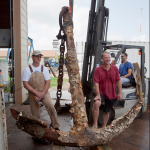 Chatham in heavy currents on June 9, 1792. Previous searches for the anchor had been focused in Bellingham Channel, where the main ship Discovery had been with high seas reported. The Chatham, a brig that was eventually captained by Peter Puget, was apparently not with the Discovery during the storm, the salvage team believes. The anchor was placed temporarily at the Northwest Maritime Center in downtown Port Townsend before being moved to Texas, where is was restored and is on display today.
Chatham in heavy currents on June 9, 1792. Previous searches for the anchor had been focused in Bellingham Channel, where the main ship Discovery had been with high seas reported. The Chatham, a brig that was eventually captained by Peter Puget, was apparently not with the Discovery during the storm, the salvage team believes. The anchor was placed temporarily at the Northwest Maritime Center in downtown Port Townsend before being moved to Texas, where is was restored and is on display today.

